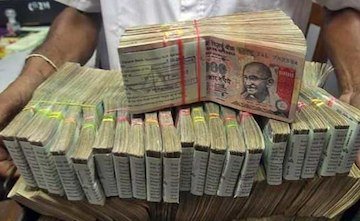RBI Explains What It Is Doing With Banned Rs 500 And 1,000 Notes
 Demonetised Rs 500 and Rs 1,000 notes, which have been counted and processed for genuineness, are shredded and briquetted before being disposed off through a tendering process, the RBI has said.
Demonetised Rs 500 and Rs 1,000 notes, which have been counted and processed for genuineness, are shredded and briquetted before being disposed off through a tendering process, the RBI has said.
The central bank had earlier estimated the value of old Rs 500 and Rs 1,000 notes received, as on June 30, 2017, at Rs 15.28 trillion.
Old currency notes which include demonetised Rs 500 and Rs 1,000 notes are counted and processed in sophisticated currency verification and processing system. The notes processed are shredded and briquetted in the shredding and briquetting system installed in various RBI offices, the RBI said in reply to a Right to Information query filed by a correspondent from news agency PTI.
Once compressed into bricks', the shredded notes disposed of through a tendering process, according to the reply.
RBI does not recycle such processed notes, the RBI said.
At least 59 sophisticated Currency Verification and Processing or CVPS machines are in operation in various branches of RBI across the country to process demonetised notes for their arithmetical accuracy and genuineness.
The government had on November 8, 2016 banned the use of Rs 500 and Rs 1,000 notes and allowed the holders of these currency bills to deposit them with banks or use them at certain notified utilities.
In its annual report for 2016-17 released on August 30 last year, the Reserve Bank of India said Rs 15.28 lakh crore, or 99 per cent of the demonetised notes, had returned to the banking system.
The central bank said in the report, for the year ended June 30, 2017, that only Rs 16,050 crore of the Rs 15.44 lakh crore in old high denomination notes had not returned.
As on November 8, 2016, there were 1,716.5 crore pieces of Rs 500 and 685.8 crore pieces of Rs 1,000 notes in circulation, totalling Rs 15.44 lakh crore, it had said.